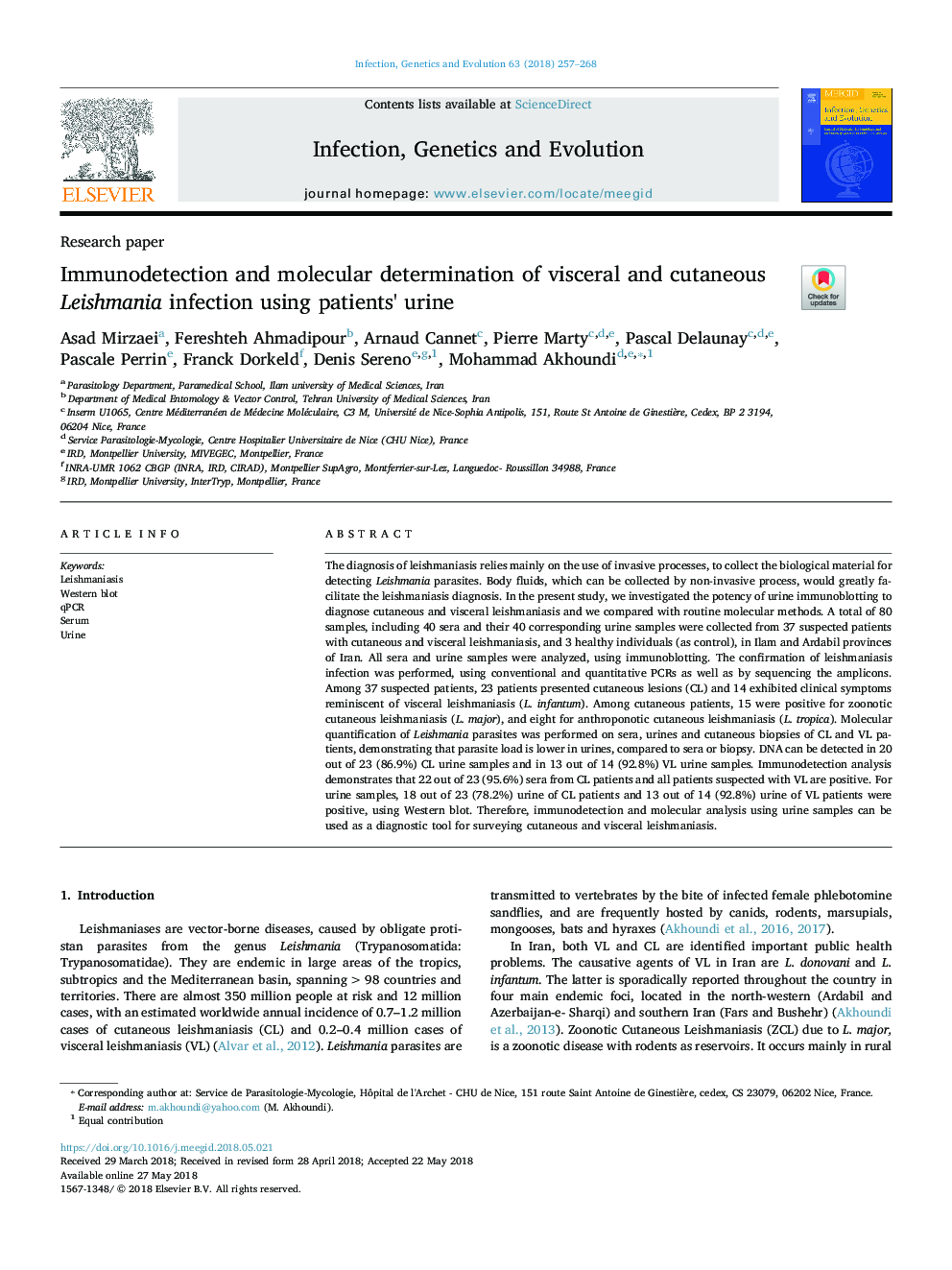| کد مقاله | کد نشریه | سال انتشار | مقاله انگلیسی | نسخه تمام متن |
|---|---|---|---|---|
| 8646647 | 1570140 | 2018 | 12 صفحه PDF | دانلود رایگان |
عنوان انگلیسی مقاله ISI
Immunodetection and molecular determination of visceral and cutaneous Leishmania infection using patients' urine
ترجمه فارسی عنوان
تعیین ایمنی و تعیین مولکولی عفونت لیشمانیا عصبی و پوستی با استفاده از ادرار بیمار
دانلود مقاله + سفارش ترجمه
دانلود مقاله ISI انگلیسی
رایگان برای ایرانیان
موضوعات مرتبط
علوم زیستی و بیوفناوری
علوم کشاورزی و بیولوژیک
بوم شناسی، تکامل، رفتار و سامانه شناسی
چکیده انگلیسی
The diagnosis of leishmaniasis relies mainly on the use of invasive processes, to collect the biological material for detecting Leishmania parasites. Body fluids, which can be collected by non-invasive process, would greatly facilitate the leishmaniasis diagnosis. In the present study, we investigated the potency of urine immunoblotting to diagnose cutaneous and visceral leishmaniasis and we compared with routine molecular methods. A total of 80 samples, including 40 sera and their 40 corresponding urine samples were collected from 37 suspected patients with cutaneous and visceral leishmaniasis, and 3 healthy individuals (as control), in Ilam and Ardabil provinces of Iran. All sera and urine samples were analyzed, using immunoblotting. The confirmation of leishmaniasis infection was performed, using conventional and quantitative PCRs as well as by sequencing the amplicons. Among 37 suspected patients, 23 patients presented cutaneous lesions (CL) and 14 exhibited clinical symptoms reminiscent of visceral leishmaniasis (L. infantum). Among cutaneous patients, 15 were positive for zoonotic cutaneous leishmaniasis (L. major), and eight for anthroponotic cutaneous leishmaniasis (L. tropica). Molecular quantification of Leishmania parasites was performed on sera, urines and cutaneous biopsies of CL and VL patients, demonstrating that parasite load is lower in urines, compared to sera or biopsy. DNA can be detected in 20 out of 23 (86.9%) CL urine samples and in 13 out of 14 (92.8%) VL urine samples. Immunodetection analysis demonstrates that 22 out of 23 (95.6%) sera from CL patients and all patients suspected with VL are positive. For urine samples, 18 out of 23 (78.2%) urine of CL patients and 13 out of 14 (92.8%) urine of VL patients were positive, using Western blot. Therefore, immunodetection and molecular analysis using urine samples can be used as a diagnostic tool for surveying cutaneous and visceral leishmaniasis.
ناشر
Database: Elsevier - ScienceDirect (ساینس دایرکت)
Journal: Infection, Genetics and Evolution - Volume 63, September 2018, Pages 257-268
Journal: Infection, Genetics and Evolution - Volume 63, September 2018, Pages 257-268
نویسندگان
Asad Mirzaei, Fereshteh Ahmadipour, Arnaud Cannet, Pierre Marty, Pascal Delaunay, Pascale Perrin, Franck Dorkeld, Denis Sereno, Mohammad Akhoundi,
